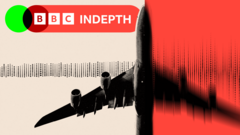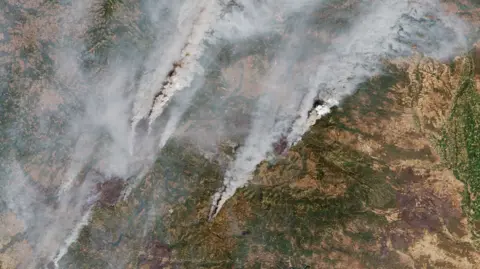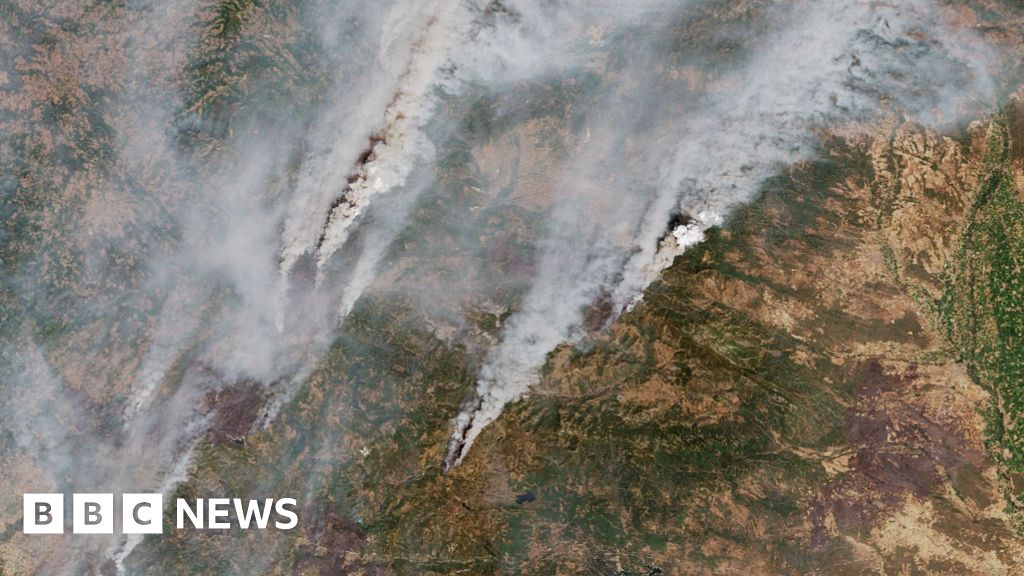Air travel is witnessing a concerning trend: turbulence is becoming not only more frequent but also more severe. A recent incident involving Andrew Davies, who was flying to New Zealand for a Doctor Who exhibition, provides a chilling glimpse into this reality. After a relatively smooth flight from London to Singapore, he experienced a sudden episode of severe turbulence that made the aircraft drop violently, tossing his iPad and spilling coffee, leaving passengers in chaos and disbelief. Although such dramatic turbulence incidents are rare, injuries have seen a stark increase, with 207 severe injuries recorded in the US alone since 2009.
Experts attribute this rise in turbulence to climate change, which is altering atmospheric conditions. "We can expect a doubling or tripling in the amount of severe turbulence around the world in the next few decades," warns Professor Paul Williams from the University of Reading. As temperatures shift and wind patterns change, flights might soon face turbulence that lasts significantly longer than experienced today. Particularly affected routes include the North Atlantic, which has seen a 55% increase in severe turbulence over the last four decades.
Three primary types of turbulence exist: convective, orographic, and clear-air turbulence. Notably, clear-air turbulence, which is difficult to predict, is expected to rise due to the changing dynamics of the jet stream, exacerbated by climate change. Captain Nathan Davies, a commercial pilot, notes the growing prevalence of larger storm cells in recent years, suggesting a direct correlation between climate change and turbulent conditions.
This surge in turbulence is concerning for many passengers. A YouGov survey revealed that over a fifth of UK adults are apprehensive about flying, a fear that might intensify as turbulence becomes more common. Furthermore, the economic implications for airlines are significant, with costs related to turbulence estimated to range from £180,000 to £1.5 million annually for each airline.
However, airlines are actively seeking solutions to mitigate turbulence risks. Improved turbulence forecasting now allows for about 75% accuracy in predicting clear-air turbulence – a notable increase from previous years. Airlines are also implementing precautionary measures, such as earlier seat-belt compliance and even considering the use of advanced technologies that mimic nature, like designing wings inspired by barn owls to enhance stability in turbulent air.
While such innovations are on the horizon, they may take time before becoming mainstream in large commercial aircraft, as noted by aerospace engineer Finlay Ashley. But as Andrew Davies reflects on his nerve-wracking experience, he emphasizes the importance of remaining cautious: "The moment I sit down, my seat belt goes on. I pick my moments to get up, but quickly buckle up again."
The rise in turbulence due to climate change is alarming for passengers and airlines alike, but with innovation and improved forecasting, precautions are being put in place to manage these challenges.
Experts attribute this rise in turbulence to climate change, which is altering atmospheric conditions. "We can expect a doubling or tripling in the amount of severe turbulence around the world in the next few decades," warns Professor Paul Williams from the University of Reading. As temperatures shift and wind patterns change, flights might soon face turbulence that lasts significantly longer than experienced today. Particularly affected routes include the North Atlantic, which has seen a 55% increase in severe turbulence over the last four decades.
Three primary types of turbulence exist: convective, orographic, and clear-air turbulence. Notably, clear-air turbulence, which is difficult to predict, is expected to rise due to the changing dynamics of the jet stream, exacerbated by climate change. Captain Nathan Davies, a commercial pilot, notes the growing prevalence of larger storm cells in recent years, suggesting a direct correlation between climate change and turbulent conditions.
This surge in turbulence is concerning for many passengers. A YouGov survey revealed that over a fifth of UK adults are apprehensive about flying, a fear that might intensify as turbulence becomes more common. Furthermore, the economic implications for airlines are significant, with costs related to turbulence estimated to range from £180,000 to £1.5 million annually for each airline.
However, airlines are actively seeking solutions to mitigate turbulence risks. Improved turbulence forecasting now allows for about 75% accuracy in predicting clear-air turbulence – a notable increase from previous years. Airlines are also implementing precautionary measures, such as earlier seat-belt compliance and even considering the use of advanced technologies that mimic nature, like designing wings inspired by barn owls to enhance stability in turbulent air.
While such innovations are on the horizon, they may take time before becoming mainstream in large commercial aircraft, as noted by aerospace engineer Finlay Ashley. But as Andrew Davies reflects on his nerve-wracking experience, he emphasizes the importance of remaining cautious: "The moment I sit down, my seat belt goes on. I pick my moments to get up, but quickly buckle up again."
The rise in turbulence due to climate change is alarming for passengers and airlines alike, but with innovation and improved forecasting, precautions are being put in place to manage these challenges.

















